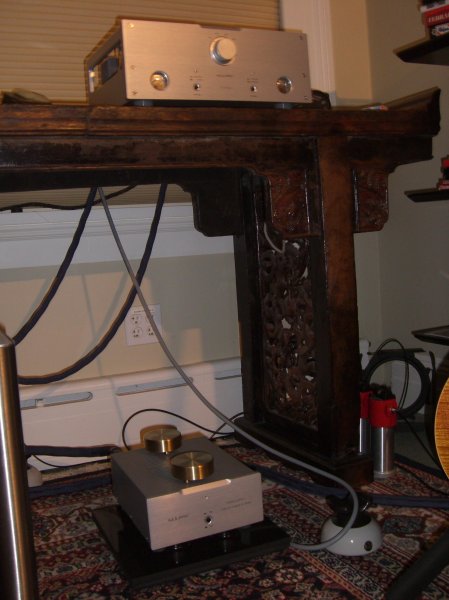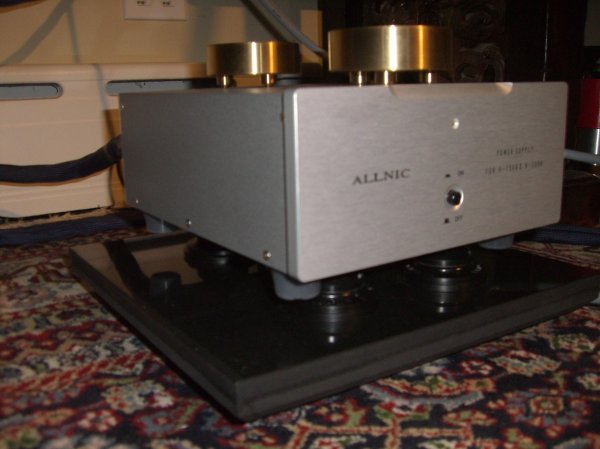I greatly preferred the RCA 5U4G to the Mullard GZ37. Didn't like the sound of the Mullard at all in my system. Sounded whipsy, etched and flat dimensionally. RCA might have been slightly darker and lost some detail but much more listenable. In the end, it's not really about the brand of the rectifier tube in the PS but how "stiff" the power supply is with the given tube. And that will vary according to brand and type of tube.
This note was sent to me from Charlie/Stellavox here on WBF some time ago in regards to the interaction of rectifier tubes and power supplies.
Yes there are a number of rectifiers like the 5R4, 5U4 and the 5AR4 that can be used interchangeably - kind of. However if you look at their specifications, you'll see that (when warmed up) they all have different VOLTAGE DROPS drops, which means that they have different effective internal resistances. I used this to my advantage when I designed the power supply for my Stereo 70; 6B4G "conversion" project a number of years back. The 6B4's can't withstand nearly the same B+ as an EL34, so I substituted a 5R4 instead of the stock rectifier (5AR4?) For the same output tube current draw, the 5R4 dropped 60 volts more than the 5AR4 and 20 volts more than a 5U4 (I guess you could say by comparison that a 5U4 would drop 40 volts more than a 5AR4.
Now the tube manufacturers didn't try to design a rectifier for a certain voltage drop but higher efficiency and greater voltage / current handling capability, so the more modern rectifiers did have a lower voltage drop, which if you think about it means that they can run "cooler" for the same current passing through it (extra voltage drop has to be dissipated as heat) - which would undoubtedly lead to much longer life. Also, the 5AR4 can pass a lot more current - overall a much more "robust" tube.
The less the voltage drop, the lower the internal resistance and the "stiffer" the power supply will be. I think this is why people may hear differences between rectifier tubes (nomenclatures).
Now the above doesn't deal with sonic attributes between DIFFERENT manufacturers of the SAME tube type. I never thought to try this - at the time I was too busy comparing 6B4's and (the) 6922 drivers. Gut feel is that any differences would be subtle - nowhere near the differences between manufacturers of the same nomenclature amplifying tubes.
Just did some on-line searching of tube characteristics and found that while the voltage withstand and current carrying capability of the 3 tubes are similar, the plate resistance of the 37 and AR4 is 75 ohms while the resistance for the U4 is close to 200 ohms and my lowly 5R4 is almost 300 ohms (these characteristics are either directly given or can be calculated by using Ohm's law and dividing the given voltage drop by the given current that produces that drop). Now the "stiffness" of the power supply is determined by the sum of the transformer secondary and the rectifier resistance, with the lower total the better. To get an idea of transformer resistances, I just measured a few small power transformer secondary resistances and got 100 to 200 ohms (I'll bet that a larger transformer resistance could be down to 50 to 75 ohms). SO you can see how the rectifier resistance could play a big part in the "stiffness" and perceived sound. Of course the stiffness is also determined by the amount of filter capacitance in the "smoothing" circuit.
Compare this with a silicon power rectifier that has a resistance of well under 10 ohms !.
[/QUOTE
No doubt correct Myles, and thanks for including CKing's explanation. The GZ37 that i had on loan to try i sent back, in part based on your earlier postings to this effect. The Mullard I'm using is a GZ34, a so-called 'Fat Base' from the first series of those tubes. I gather it is has different characteristics than the GZ37, but I'd have to do a little digging. There is a site that has all the original specs for these tubes that I looked at a few times when I was trying to get a handle on these very tubes.
BTW, can you speak to the Aurios at all- they are noticeable in adding a level of clarity and tightening up the bass, but on a record i always find a little too shouty on my horns - the 200 g pressing of Neil Young's Greatet Hits, particularly, the cuts Old Man and Heart of Gold, it was too much. I stuck some old Mod Squad hard rubber pucks on the Aurios and it tamed them. On other recordings the effect was not so pronounced. (For me, those two Neil Young tracks on that record (Classic) is always a test for the extremes). When you had the Allnic, what did you do to decouple/isolate the power supply?



